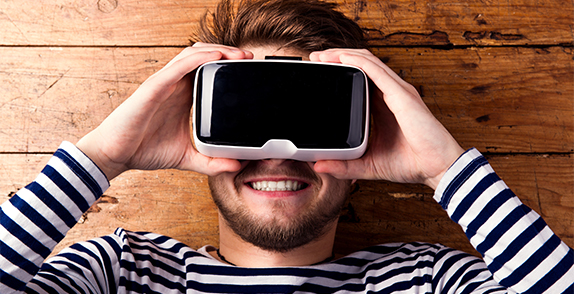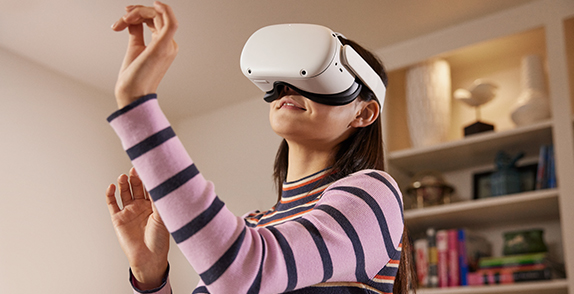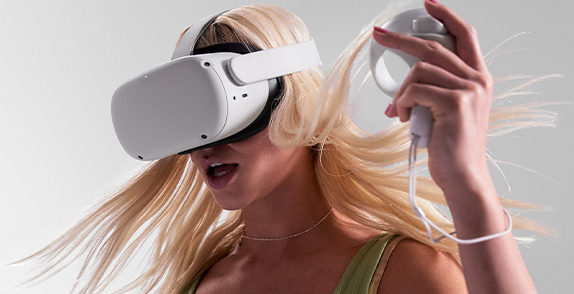What is virtual reality? All you need to know about virtual reality | The Drop | Inspiration | O2

All you need to know about virtual reality – the exciting tech of the future
Virtual reality is on the rise. But how does it work? Here’s everything you need to know.

What is VR?

How does VR technology work?
The technology has evolved rapidly in recent years. Whilst a decade ago, customers would need to buy a phone or high-speed computer with their VR headset – meaning higher purchase prices - the new headsets are now standalone.
Different VR devices can be worn alone or together to create the illusion of reality. Devices that cover the eyes, such as glasses or headsets contain screens showing the virtual environment. Motion sensors let you experience changing viewpoints in VR as you move your head in the real world.
Many headsets come with built-in speakers to immerse you in highly realistic 3D audio, while eye-tracking tech lets you move your VR gaze just like you would IRL.

How good is VR tech so far?
It’s already very advanced. The world’s biggest tech companies have been heavily investing in VR in recent years, launching impressive products for people to use at home. Some of these can even be connected to existing consoles, for a vastly more exciting and immersive gaming experience. Meta is also developing within the metaverse - the next evolution in social connections through online worlds, that blend VR and AR with the goal of creating digital spaces that closely mimic our physical lives. The VR industry is only expected to keep growing in popularity, and it’s predicted to be worth a staggering $454 billion by 2030.

The VR product to know
One of the most advanced headsets in the market is Meta Quest 2. It’s an all-in-one device, meaning it doesn't have to be connected to a gaming PC or any other computer. It features a sleek, wireless design with handheld controllers and access to over 350 titles across gaming, fitness and entertainment. This means it can take you almost anywhere you want to go with maximum freedom, from multiplayer games to the front row of live events or even workouts in a volcano. And if you want to make the experience more social, you can link it to your TV so you can share your VR experiences with an audience. You can now get the Meta Quest 2 (including headset and controllers) from just £9.73 a month, on a 36-month contract with O2 and a £50 upfront cost.



